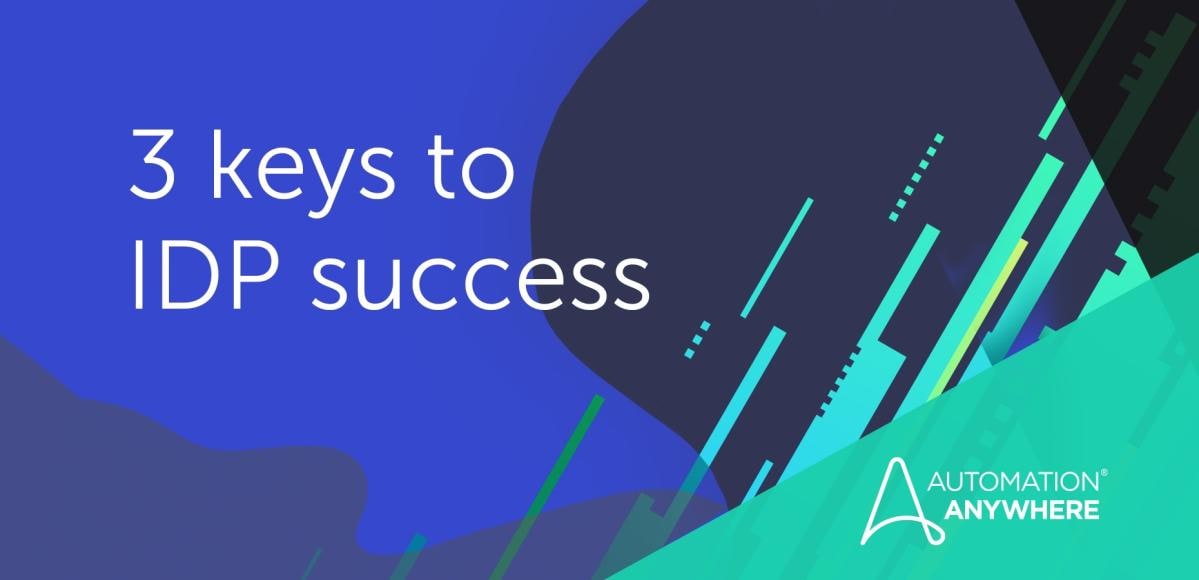Blog
How to Scale Intelligent Document Processing
Share this:

Intelligent document processing (IDP) is a rapidly emerging technology field that allows users to automatically extract data from various document types into a machine-readable format. IDP minimizes the need for manual data entry, copy-pasting information from one form to another, and squinting at grainy invoices trying to find a line item.
Mortgage applications, medical reports, contracts, and insurance claims can automatically be digitized and structured, with each piece of data being labeled by computer vision. Armed with vast amounts of structured data, organizations can rapidly feed this data into various applications and automation platforms, all without ever having to need human eyes laid upon them.
A new challenge to overcome
As the field of intelligent document processing expands to encompass a greater number of use cases and users, a new challenge emerges: How will IDP players handle the increasingly large volume of documents being processed daily, particularly in those of large enterprises? Machine learning (ML) is time- and resource-intensive work that requires hefty machines to process millions of data points a day.
To realize the vision of IDP taking over manual document processing, IDP customers must consider how these solutions process at scale. Thus, it is also clear that those who will scale the fastest and tackle the highest volumes without sacrificing accuracy will emerge as leaders in the IDP market. For an IDP solution to be scalable with ease, it has to have three main factors:
- Cloud-native deployment model
- Unified platform
- Business-friendly artificial intelligence (AI)
Without these qualities, organizations will have difficulty implementing an IDP solution on a large scale. Let's dive deeper into why.
Cloud-native model
In today's modern era of computing, the cloud is the essence of any scalable computing solution. Cloud providers such as Amazon Web Services and Google Cloud have paved the way for a digital transformation to take place, allowing users to dynamically scale their computing infrastructure as they see fit. This is in stark contrast to the monolithic architectures, which are stiff and cumbersome to adapt as an organization's needs change.
A similar digital transformation with intelligent document processing is already underway; however, it cannot happen without cloud technology. For an IDP solution to scale from a couple of use cases to becoming ubiquitous throughout an organization, it needs to leverage the flexibility and mobility within a cloud infrastructure.
Because of the modular nature of the cloud, cloud IDP solutions can process hundreds of documents in parallel, and throughput can be scaled up or down to meet processing demands. IDP platforms incompatible or poorly integrated with cloud will fall behind in speed of deployment and cost-effectiveness.
Unified platform with human/bot collaboration
While the core of many IDP technologies revolves around the transformation of unstructured data to machine-readable data, many of them don't deal with how to manipulate and process data afterward. Yet, IDP is not just about extracting data from documents but all data handling and connection components that complement the data extraction. When an invoice's totals and taxes are extracted, that information needs to be entered into an ERP system. When an insurance claim's data is collected, it needs to be cross-checked with corresponding billing statements. Before any claims are processed, they need to be manually approved by a human.
To handle these complexities, many IDP providers work in conjunction with third-party software to automate and deliver the information to their target system or user. Even so, this architecture comes with drawbacks.
Changing one piece of one software often requires manual reconfiguration of the others. Managing and staying up to date with multiple pieces of software is often an IT nightmare. Maintenance of different user accounts across loosely fitting components makes for clumsy and inflexible solution deployments.
Processes that require direct human intervention are bottlenecked by manually switching back and forth between manual and automated tasks. That is why it is critical for data extraction systems to be tightly integrated with the data processing and connection components within an intelligent document processing solution. When these applications can be managed from a single centralized location, multiple workflows involving humans and bots can be orchestrated in a streamlined manner.
An interwoven ecosystem of applications eliminates the need to deploy multiple applications, manual cross-application integration, and management of users across multiple systems. This simplifies deployment, reduces maintenance costs, and decreases the time to scale.
Business-friendly AI
A key component for any piece of software to be successfully scaled is ease of use. This is no less true for intelligent document processing solutions. Users often find themselves tangled with implementation and deployment issues, taking much longer to derive the value that was promised to them in the beginning. These issues are only exacerbated by the collecting and training of data for AI/ML applications. That is why AI applications leveraged within an IDP solution must be built with ease of use in mind.
Non-technical users need to set up, train, and execute their data extraction and handling components in as little time as possible, especially when dealing with a variation of high complexity documents in large volumes. The time wasted in between debugging workflows and directly training models decreases ROI, impeding organizations from utilizing the full potential of an IDP solution.
Key ingredients for scaling
To summarize, for an IDP solution to successfully scale, you must have:
- An IDP solution deployed on a cloud-native platform. Cloud-native IDP expands deployment possibilities, giving users great flexibility in deployment architecture, optimizing processing speed, and minimizing computing costs.
- Tight integration with its automation counterparts. An IDP solution with data extraction components that work closely with its data processing components eliminates the clunky setup and management of users and applications across different platforms.
- A solution that's easy to set up and deploy by business users. When users can intuitively understand the IDP platform, they can leverage it to immediately realize an ROI instead of wasting valuable time learning how to use it.
The future of the intelligent document processing market lies in how well IDP providers will implement these three capabilities. The providers that possess and capitalize on these advantages are poised to be leaders in the IDP market and take IDP to the mainstream.
Explore Superior Intelligent Document Processing.
About Perry Leong
Perry Leong is the technical marketing lead for the Automation Anywhere suite of intelligent automation products, including IQ Bot, Discovery Bot, and Bot Insight.
Subscribe via EmailView All Posts LinkedIn






